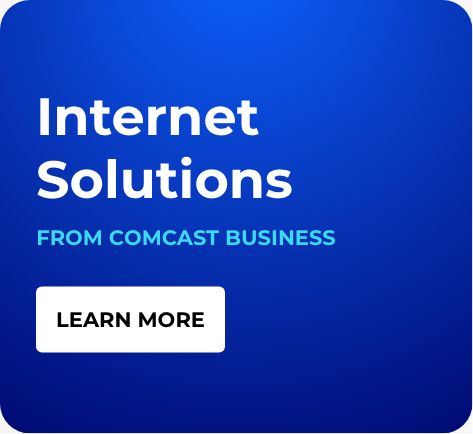How an Expanded Internet Will Strengthen the Knowledge Economy

Companies are on a mission to connect the world—from the treetops to the clouds. Facebook first democratized the idea of ‘connecting the world from the sky’ in a white paper highlighting efforts to provide Internet access to urban and rural environments worldwide. Today, only one-third of the world can access the Internet, meaning that a knowledge gap between the connected and the not connected threatens to further divide us.
“Connecting the world is one of the fundamental challenges of our time. When people have access to the Internet, they can not only connect with their friends, family and communities, but they can also gain access to healthcare, education and financial services, and have a greater say in their societies,” wrote Mark Zuckerberg. As part of Facebook’s long-term strategy to provide Internet access to the 5 billion people without connectivity, the company has imagined drones and satellites that broadcast content in developing countries. With the implications of a shared global knowledge economy, Facebook is among a number of companies to invest in the future of computing and non-traditional infrastructures.
Democratizing our access to globally accessible networks — through everything from solar-powered sticks to skyorbiters—is good for humanity. These new platforms for ‘Anywhere Connectivity’ aim to solve the physical barriers plaguing content distribution and deploy access to more sustainable and cost-efficient healthcare, education and financial services. Global Internet access and connectivity will empower billions — enabling everything from greater information sharing to mass emergency alert systems.
Below we detail three examples of services and innovations taking giant leaps in bridging the growing knowledge divide. These services and innovations—that serve to provide access to primary ISPs—are granting more people access to digital media that connects them with others, allows them to further build their businesses, and ensures they may influence their communities on local and global scales.
BRCK is a mobile, self-powered Wi-Fi device that allows users to connect to the Internet from remote environments. The concept grew out of rural Africa, where a team of African-raised and situated engineers, software developers and technologists built a physically robust device with a tough and rugged case suited for volatile environments, where robust hardware that can withstand power outages is not only conducive to work but essential to it. The portable modem was designed for disaster relief, with the ability to withstand tumultuous weather conditions, severe drops in climate and more. To deliver connectivity in foreign villages where power is sparse, the micro-server can operate over an eight-hour window and be charged from any outlet or solar panel. Of course, BRCK can only get you up on the Internet when there’s an available way to connect, which is where the implementation of a Facebook drone could prove useful.
“The sad reality is there is a whole generation not being exposed to what is happening all over the world in terms of content,” Frankie Onuong of BRCK described in a blog post, speaking on the problem that a lack of access to greater connectivity brings.
BRCK owners can manage their device from the cloud, enabling them to change preferences or settings from anywhere. Travelers can also top off their SIM card using the cloud to make international calls from off-the-grid destinations. This extendibility feature means that a BRCK in rural environments can be accessed from any urban areas, as well as be used to connect to multiple networks and manage global teams.
“With Internet connectivity, the community will be able to access government services, access educational content and sell…beautiful art work abroad,” Onuonga continued. A feat, in and of itself, the greater avenues to access BRCK provides come during the perfect time as the African continent is due a turn of good fortune, is home to some of the world’s fastest growing economies, and is a prime market for mobile connectivity.
Alternatively, Endaga CCN1 is a portable box that enables rural communities to more efficiently manage their cellular networks. The Endaga CCN1 technology enables any one person to build a locally owned, small-scale and profitable network with a flat price point of $6,000. The fee supplies power and Internet to an entire community within a 10km radius, so any individual (or group) with the interest and investment funds to start a local operator business can purchase the box and sell data within their community. Endaga grants access to a globally addressable phone number, allowing these distributors to create their own networks and provide voice, SMS and data service. The initiative empowers new sources of income and business to small and sparse villagers.
The box cannot operate as its own entity, however. It requires both power and Internet from wired or wireless networks. “Endaga should be a complement to Google’s and Facebook’s efforts to bring the rest of the world online,” Endaga co-founder and CEO Kurtis Heimerl told Re/Code.
“Google Loon, Facebook drones — these are all five-year-long plays to get backhaul into these areas…If and when those high-profile experimental networks come online, Endaga boxes can use them to provide more and better networks.” Evidently, the vision to open up Internet connectivity to people everywhere requires interdependence from different broadcasting systems in order to grant universally accessible data. That’s an added hurdle in a forever-winding staircase.
Yet, Endaga’s impact is no less world changing as Papua, Indonesia was blessed with its first community cellular network thanks to its development. The world’s first community cellular network in a rural village will only prove to be a greater triumph than it already is in bridging the digital divide gap as the world’s people continue to flock to urban centers at alarming numbers.
Concept project Outernet is a network of miniature satellites that would deliver universal and secure information to people in developing and developed countries from low Earth orbit (with much of their work still upcoming).
The DIY-esque technology enables anyone to configure their satellite TV equipment into a receiver and access the network from any Wi-Fi enabled device. With Outernet, anyone can connect to the signal and access the global media platform touted as ‘humanity’s public library.’ The archive of content, determined by current web content trends, will broadcast relevant news and information from space. The free broadcast will deliver basic information, education and emergency alerts to all of humanity — an accessible stream of video, textbooks, software and weather updates. Services such as Outernet operate for the greater good, with a humanitarian notification to facilitate communication channels between individuals and organizations during natural disasters.
With Facebook drones and Earth-grounded boxes providing affordable Internet service, a greater scope of humanity can expect better access to information. These illustrated instances of ‘Anywhere Connectivity’ are shifting the paradigm of the traditional model of network distribution so that it encompasses one and all.
This article was originally published on PSFK.
Today, only one-third of the world can access the Internet, meaning that a knowledge gap between the connected and the not connected threatens to further divide us.
Locked Content
Click on the button below to get access
Unlock NowOr sign in to access all content on Comcast Business Community
Resource Center
Learn how Comcast Business can help
keep you ready for what's next.











